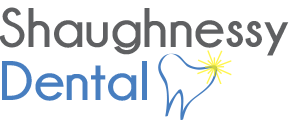Orthodontics
Why Do People Need Braces?
Braces are a totally normal and practically expected part of puberty (and many adults get braces, too). To better understand why braces and other orthodontic devices are needed, it helps to talk a bit about the teeth first.
As you made your way through childhood, your “baby” teeth fell out one by one, to be replaced by permanent, adult teeth. Although some people’s adult teeth grow in at the right angle and with the right spacing, many people’s teeth don’t.
Some teeth may grow in crooked or overlapping. In other people, some teeth may grow in rotated or twisted. Some people’s mouths are too small, and this crowds the teeth and causes them to shift into crooked positions.
And in some cases, a person’s upper jaw and lower jaw aren’t the same size. When the lower half of the jaw is too small, it makes the upper jaw hang over when the jaw is shut, resulting in a condition called an overbite. When the opposite happens (the lower half of the jaw is larger than the upper half), it’s called an underbite.
All of these different types of disorders go by one medical name: malocclusion. This word comes from Latin and means “bad bite.” In most cases, a “bad bite” isn’t anyone’s fault; crooked teeth, overbites, and underbites are often inherited traits, just like brown eyes or big feet are inherited traits.
In some cases, things like dental disease, early loss of baby or adult teeth, some types of medical problems, an accident, or a habit like prolonged thumb sucking can cause the disorders.
Malocclusion can be a problem because it interferes with proper chewing — crooked teeth that aren’t aligned properly don’t work as well as straight ones. Because chewing is the first part of eating and digestion, it’s important that teeth can do the job. Teeth that aren’t aligned correctly can also be harder to brush and keep clean, which can lead to tooth decay and cavities. And finally, many people who have crooked teeth may feel self-conscious about how they look; braces can help them feel better about their smile and whole face.
If a dentist suspects that a kid or teen needs braces or other corrective devices, he or she will refer the patient to an orthodontist. Orthodontists are dentists who have special training in the diagnosis and treatment of misaligned teeth and jaws. Most regular dentists can tell if teeth will be misaligned once a patient’s adult teeth begin to come in — sometimes as early as age 6 or 7 — and the orthodontist may recommend interceptive treatment therapy. (Interceptive treatment therapy involves the wearing of appliances to influence facial growth and help teeth grow in better, and helps prevent more serious problems from developing.) In many cases, the patient won’t be referred to an orthodontist until closer to the teen years.
Comments are closed


